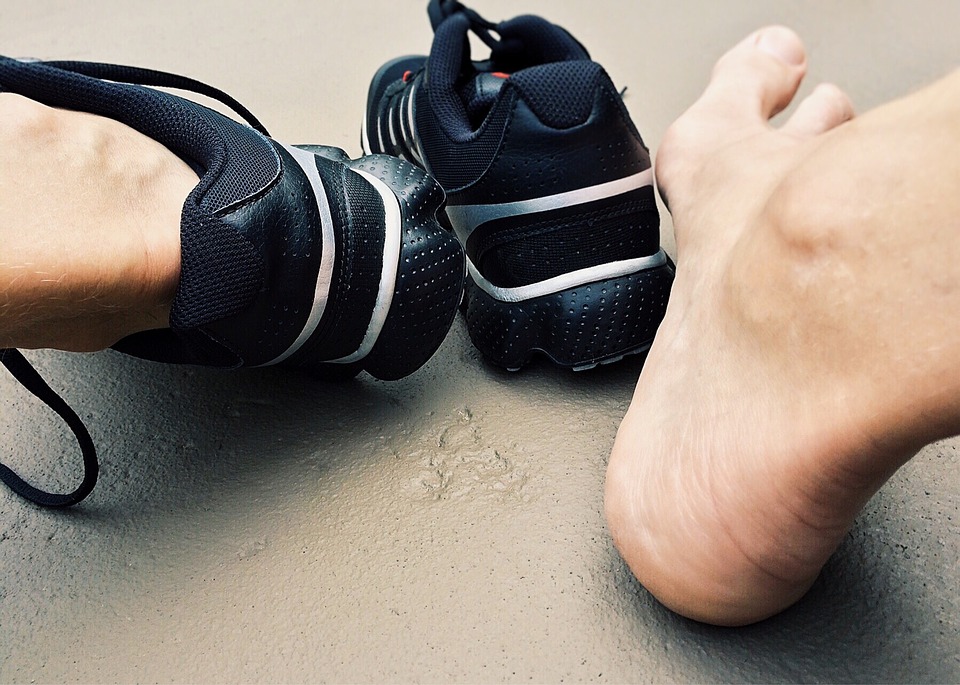What are Shin Splints?
Shin splints is the common name given to Medial Tibial Stress Syndrome (MTSS). It describes pain at the front of the leg, which is either caused by inflammation and irritation of the outer layer of the tibia and its tendinous attachments, or by stress on the tibia, which may precede a stress fracture. Whatever the cause, the pain typically affects the distal third of the tibia, towards the middle of the body.
It is also possible, but less common, to get anterior shin splints, which have the same pathophysiology, however the pain is present on the upper third of the tibia, towards the outside of the body.
A clinician should make the diagnosis, as it is possible the pain is caused by a stress fracture, compartment syndrome, nerve entrapment, amongst other things.
Who is affected by Shin Splints?
Shin splints can affect anyone at any age, symptoms usually present when someone begins a new training regime, increases the amount of activities they do or change the type of activity they participate in for example when a runner changes from trail running to tarmac.
Symptoms?
Pain and tenderness which increase gradually are the main symptoms. These occur on the lower, inside of the tibia or the upper outside, depending on whether the patient has posterior or anterior shin splints.
There may be pain at the start of exercise which often eases as the session continues only to come back worse later in the training session or afterwards.
Pain is often worse the next morning but may ease off over time with gentle use, often to become painful again later. Swelling or lumps and bumps may be felt along the inside of the bone, particularly in more chronic cases where new bone growth has occurred through repeated trauma.
Occasionally, in severe cases, reddening of the skin over the inside of the leg from acute inflammation may be seen. It is important to get an accurate diagnosis so effective treatment can be applied.
Causes
Although too much running, jumping, or sprinting is the obvious cause, there are several factors which can increase the likelihood of shin pain developing.
Overpronation – This occurs when the foot rolls inwards too much, flattening the arch of the foot and causing the lower leg to rotate inwards. This in turn increases the stress on the soft tissues of the lower leg resulting in pain and inflammation.
Over supination – This is where the foot rolls outwards too much during the time the foot is in contact with the ground. If you think you have suspected biomechanical issues, then a professional can perform gait analysis tests either with a treadmill or using force plates to determine this and where needed provide corrective orthotic inserts for your shoes.
Inadequate footwear – Wearing the wrong type of shoe for your running style or running shoes that are just too old and have lost their support and cushioning can cause injury.
Increasing training too quickly – This is one of the more common causes of shin splints. Running on hard surfaces or on your toes as in sprinting and generally doing too much too soon will increase the risk of injury.
Poor flexibility – Poor flexibility at the ankle can cause increased stress on the soft tissues, muscles and tendons of the lower leg when running. The calf muscles, the tibialis posterior muscle in particular, may need to be stretched. Calf stretches, and the use of a plantar fasciitis night splint can help.
Poor Nutrition – metabolic disorders and malnutrition can affect the nutrient supply to the periosteum (outer layer of bone), which can play a part in the formation of shin splints.
Treatment
Conservative:
- Rest and offload the area as much as possible
- Use ice and anti-inflammatories to reduce the swelling to the area
- Compression socks or strapping can help reduce the swelling
- Elevate the area to help with blood flow and reduce the swelling
- Orthotics and treatment for biomechanics: to correct any abnormalities in gait and prevent risk of re-injury
- Rehab the area by stretching and strengthening the muscles involved. Calf stretching exercises will stretch the tibialis posterior muscle which is often associated with shin pain. Calf stretching should be done both with the knee straight and bent. Strengthening exercises may also be required although being an overuse injury, it is rest and stretching which should be the priority. A gradual return to full fitness is important. Calf raises, and toe raise exercises can help get the muscles of the lower leg working again
- Replace running with swimming or cycling
- Sports massage can be useful to reduce tension in the muscles of the lower leg which may be causing traction on the bone. Removing any tight lumps, bumps, and knots as well as encouraging blood flow to the area may aid the healing process
As with any injury we would always recommend early diagnosis and starting on a treatment plan as soon as possible to speed up recovery and reduce the risk of requiring more complex or long-term treatments. Our therapists at Newcastle Sports Injury are highly skilled at diagnosing and treating sporting injuries in growing children and adolescents, and will always create a bespoke rehabilitation/treatment plan which is specifically designed to fit the needs of the patient.
For further information contact 0191 2330500 and one of our therapists will be happy to assist.

